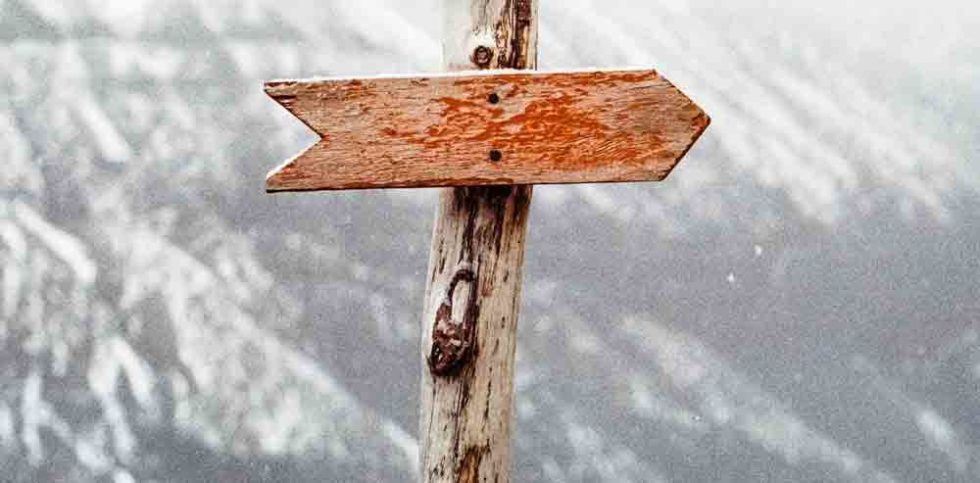
Content & Distribution Strategy
Learn more in the article about content and distribution below! Creating awesome online content and almost no readers/ viewers? You can create amazing articles, video’s infographics and much more content with great value but sometimes only a few people see your content. What is going wrong and how can you improve this? Read this article and learn more how you can improve your statistics and reach out to the right people with every piece of content you put out.
Why do you need a Content & Distribution Strategy?
Make sure you always connect content and distribution. This can be organic, by owned media, earned media and paid media. When you put quality content online you want to make sure people want to read it. Most important question how does your target audience know your awesome content is online?
Content & Consistency in your content strategy is KEY
See also the video of Neil Patel about Content & Distribution in 2019
Take out: It doesn’t matter how good your content piece is, it not gonna be seen unless promote it. Spent more time promoting than writing.
How to create a Content & Distribution Strategy
Make sure you match your content and distribution plan. Know for who you wrote your content and make sure you distribute your content where you audience is active. Ask yourself some questions around your content, your content strategy and distribution plan. See below a the LIVE stats on the moment I executed my content strategy for my trending Pinterest article of yesterday!

What, Why, Who, When & Where?
- Who do you want to reach out to / attract with the content you produce?
- What content does your audience want to consume, can you help them and solve a problem?
- Why do you produce this content for your audience?
- When (on what time) do you execute your content strategy?
- Where do you distribute your content?
Example case: shorten LinkedIn URL
In 2010 a client called me with the question; how can I shorten my LinkedIn URL. I tried to explain this over the phone but wasn’t so easy so I wrote a quick email and found a YouTube instruction Video how to shorten the LinkedIn URL. Send this email back and received within 5 minutes a message that it was very helpful. I thought why not put this email on my blog and help more people. After 3 months the stats of my website went nuts. Looking in closer detail, per month 1500 people were looking how to shorten the URL of their LinkedIn profile. I knew from this moment people needed this content and I was dropping this helpful tips in some groups and fora. This made my statistics go through the roof and I was able to generate a lot of leads for my free ebook about upgrading/position your LinkedIn profile. From that ebook I was able to generate sales for my personalised and group training about LinkedIn.
Reach out to your audiences
Important these days is to understand the algorithm of the Social Channels. Let me explain the basics with a couple of examples.
YOUTUBE:
When you upload a video in YouTube: the views, likes minutes watched (and some more variables) in the first 24 hour will determine if your video will rank high on YouTube in the listings and searches. The better your video will perform over the first 24 hours the better your video will rank.
FACEBOOK:
When your content receives good engagement within the first hours when online your content will be placed higher on all the feeds of the people that will be browsing Facebook. That means more views and more chance to get even higher engagement on your content.
The algorithm
Basically every social media platform generated an algorithm to filter out the best content for their users. Goal of this is to have the users as long as possible on their platform. Important to know is that NATIVE content on Social Media is doing better. For example sharing a Facebook Video on LinkedIn might be easy to do. But LinkedIn rather sees you uploading the video to LinkedIn so the content on the LinkedIn platform. (This rule is for every Social Media)
Content and Distribution Audience Strategy
With the algorithm mentioned above in mind it is important to think what, when and where you post your content to start with warm audience. With warm audience I mean people that already have a connection with your brand / content this way its more likely that they gonna engage with your content. After you received some engagement already you can target colder audience to increase the awareness of your content and brand. Due to the social proof on your content colder audience are more likely to check out your content so also will be more likely to engage with your content.
Distribution strategy: Themes & segmentation
When you create content and the subject variates quite a bit. Also adjust your content distribution strategy. The more suited the content to the audience the bigger the chance they will engage with your content. As an example you own a website for runners and cyclist. When you create content you should create a distribution plan for both parties. Below I will explain what I mean with that.
Write for every channel differently
When sharing your content your different channels make sure your message is tailored towards the audience you’re talking to and be specific per channel. This way you increase the option for engagement what will help your content to rock the internet!
Owned Media distribution
Owned media is easy to explain; basically all the media you can manage yourself.
- Your website
- Your blog
- Your Social Media
- Your newsletter
- Your magazine
- Every media that you own
QUICK TIP:
Why not adding your latest content in you email signature? Using your own channels can work phenomenal think creative. In my perception one of the best use of owned media is from IKEA Australia for their career instructions campaign.
TIP: Cross promote your channels
When you’re executing your content distribution plan try to cross promote your channels. The reason for this is to generate as much engaged followers for every channel. Facebook was with no doubt #1 for years. The stats prove that Facebook is on his return and Pinterest, YouTube & Instagram are coming up these days. When you are able to cross promote and have followers on every platform you own you don’t have to worry when one of the channels is instantly crashing as you still have a wide range of followers on your platforms/channels. (see example below in the orange circle where Facebook drops and Pinterest is coming up, click on the image for live stats)
Earned Media distribution strategy
Earned media refers to media relations and are unpaid brand mentions or recognition. Like off and online news articles, interviews, online reviews, guest blogs, mentions. Therefor this strategy can be very valuable when a positive impact is generated. As a third party is mentioning your brand looks often very authentic plus you tap into the network of their followers / readers /watchers.
Paid Media distribution strategy
Paid media is every form of media your brand uses to get visible. Examples of this are sponsorships, Search Engine Advertising (SEA), Display marketing, Social Media Advertising, Native banners, Re-marketing. Paid media is often used for content created by your brand and used to generate a bigger reach to promote the content.
Awesome example of paid distribution to reach warm audience is the re-marking: what you can do is serve Ads to people that, visited your website, interacted with your content or ads in the past. This way you can build lists of warm audience and serve them your new content on the right moment. Think of people that visited a page on your website of getting a mortgage. You can serve them your evergreen of “how to choose the best mortgage”.
Organic Distribution Strategy
An important distribution channel what you shouldn’t forget is Organic Distribution. When you create high quality content you will get shared by other channels without even asking. Google Search Engine Optimisation (SEO) can help a lot to generate traffic to your website as well. When done properly you can generate every day traffic to your website without even have to distribute anymore. As an example I can mention my blog Gobackpackgo.com. More than 80% of the traffic is coming in by search engines from articles I wrote more than a year ago. Most of the peaks you see in below graph were results of other people sharing my content in other Facebook groups.

What to use in your Content Distribution Plan?
For every brand it will be different, depending content, size, budget and goals. But most important is to organise the distribution plan so you can re-use the work that you put in. When you create a distribution plan I advise to make a list of media & channels you can re-use every time. Easiest way is to create templates and a sheet with shortcuts towards the media/channels and platforms so you can distribute your content as fast as possible and without forgetting one of them.
TIP:
Create a Google sheet where you categorise/ theme your channels to organise them. This way you can easy go to every channel and never forget one channel where you could have distributed your content on. In this sheet you can also add the specific URL’s to measure your campaigns/ channels / content. When you manage all these things in one place you can work more consistent and never have to look for bits and pieces any more. When you find a new channel, just simply added on your list an you will never forget to use that channel while distributing your awesome content. ❤️
Influencer Strategy / Ambassador Strategy
A popular media to use for brands is Influencer / Ambassador shares and content. When you’re a small you can already influence people by some smart tactics. Tag that brand you worked with or that clients that your finished the awesome project for. Another great trick to use is employee shares. Especially when you notice everyone and they engage with your content directly. This way you get already higher for the algorithm I explained earlier. Another big benefit is that shares of your company by your employee will boost the brand, people that are sharing articles from their work seem to have fun at the place they work, beside that the more employees will share and like the more new networks you can tap in as a brand.
List of ONLINE Content and Distribution Channels you can think of
- Email (personalised)
- Your Channels
- LinkedIn (LinkedIn articles)
- YouTube
- Snapchat
- Google Business
- Facebook Groups
- LinkedIn Groups
- Medium
- SlideShare
- Quora
- Write.as
- Steemit
Bonus tip: evergreen content
Creating evergreen content is an awesome way to re-use content year in year out. For example: When you’re running a tax agency and the rules didn’t change by the end of the year, you can share that list of tips again to help people to get more money back/ save on their taxes. Or when you run a travel company at the start of the season tips for people to survive long distance flights. For myself I try to think VALUE is priority #1: Than is it evergreen or can I make it evergreen, can I help people or is the news value high enough to create and distribute it. See here some do’s and don’s for ever green content.
Make sure you follow-up
When you share and distribute your content make sure you keep an eye and follow-up all the comments and shares. When you interact with your audience they are more likely to share, like and comment on your next content piece as well. Beside that, again, the more engagement on your content the higher your content will appear in the Social Media timelines.
Tracking, learning and improving
When you’re creating content you want to see what is the impact of the content and the different channels. This way you can analyse what channels are good and what content is doing well in certain platforms. When you have an article on you website / blog you can easily add UTM code to your URL. By doing this you can track where the traffic is exactly coming from in your Google Analytics





Add A Comment